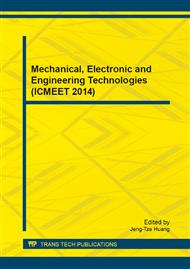p.179
p.184
p.189
p.193
p.198
p.206
p.210
p.214
p.218
A Supervisor Management and Evaluation System Based on Real-Time Location System
Abstract:
Effective management and evaluation of on-site supervision staffs in large hydropower project is a key method to strengthen management, improve efficiency, and ensure the progress and quality of projects. A new method based on smart phones and real-time tracking technology was developed to manage and evaluate on-site supervision staffs. The location information of supervisors at the construction site is collected and uploaded to the server by smart phones containing a GPS data uploading application. The server stores and processes the data, and displays the location and the track of staffs on the web page to achieve real-time monitoring. The collected GPS data is deeply analyzed to identify the specific work context of supervisors and to build 3 indicators: Field Work Time, Effective Work Time and Effective Work Scope which are effective indicators to measure the workload. The feasibility of the method was verified by simulation experiments. Experimental results show that the proposed method can determine the real-time position of supervisors accurately, and identify their work contexts effectively. Extracted indicators meet the realities of situation. The method possesses abroad potential in large hydropower construction management.
Info:
Periodical:
Pages:
198-205
Citation:
Online since:
April 2014
Authors:
Price:
Сopyright:
© 2014 Trans Tech Publications Ltd. All Rights Reserved
Share:
Citation:


